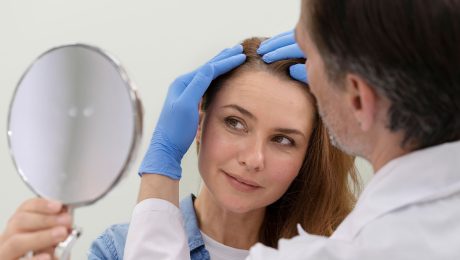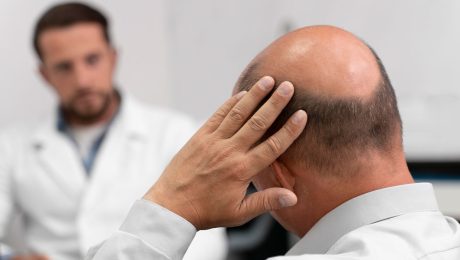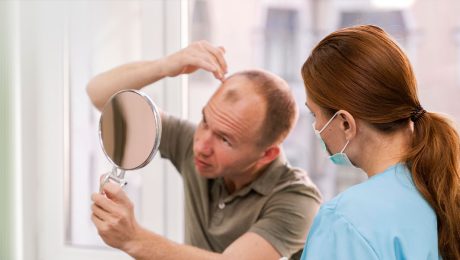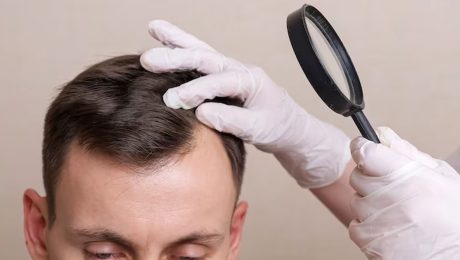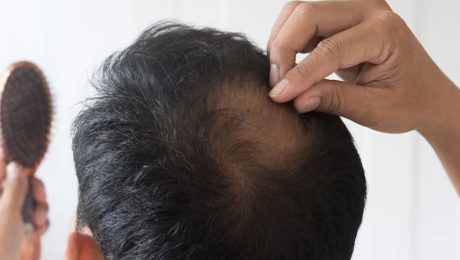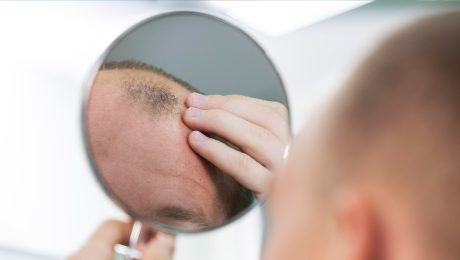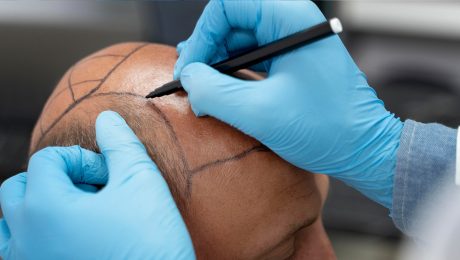How is Hair Transplantation Performed in Women?

How is Hair Transplantation Performed in Women?
Hair Transplant in Women
Although men have been at the forefront of hair transplantation in recent years, the demand for hair transplantation in women is undeniably high. The main reasons for this;
- The fact that hair is perhaps one of the most prominent and most important visual details in a woman
- Many factors such as genetic structure, health reasons, stress, aging, etc. cause hair loss or baldness
- And, the attention women pay to their appearance.
How is Hair Transplantation Performed in Women?
- When hair transplantation is performed in women, the Fue method is also used.
- Complete shaving is not performed as in men. Only the donor area determined in the nape of the neck is shaved and since this shaved area will remain under the upper hair, the shaved donor area will not be visible and there will be no bad appearance.
- Grafts (hair follicles) are taken from the donor area (nape) with the help of a micro motor.
- The transplantation process is completed by placing the grafts into the opened channels.
- The transplantation process is performed under local anesthesia.
- The procedure takes an average of 6-7 hours.
What is the Cost of Hair Transplant for Women?
Since the number of roots that each person will need will be different, it is not possible to give a clear price here. But you can contact us by clicking on the Contact page for both price information and detailed information, and you can get clear answers to every question you have in mind. It is up to you to dream and us to realize it. You just want it… As First Class Esthetic, we are here to make your dreams come true…
Contact Us
For detailed information please contact us by filling out the form below.
- Published in General
Can Hair Transplantation Be Performed from the Nape of the Neck?

Can Hair Transplantation Be Performed from the Nape of the Neck?
Nape Hair Transplant
The problem of hair loss, which everyone, regardless of men and women, experiences much more frequently than expected, is a process that involves a lot of research at this stage and when the situation becomes annoying, solutions are sought. Hair transplantation offers the most accurate solution at this point, not only bringing back the patient’s lost hair, but also densifying all the parts that are sparse and open. While researching hair transplantation, questions such as where the transplanted hair is taken from and is it possible to transplant hair from the nape of the neck? Questions like this are asked. We can answer yes to this question. In the hair transplantation process, the hair in the nape area of the patient is used. In this way, the hair in the nape area is easily attached to the transplanted area. Since the patient will have his/her own hair, a complete integrity is ensured in the hairy area on the scalp.
How Is Hair Transplantation Performed and What Should Be Considered?
Hair transplantation is performed by placing the grafts taken from the nape of the neck between the two ears, which is called the donor area, on the parts with hair loss. In this sense, is hair transplantation from the nape of the neck possible? The question is also answered. Different methods used in hair transplantation are suitable for the patient. Apart from this, some items to be considered in the process can be listed as follows:
- The first and most important step is that the procedure, which is a surgical operation, must be performed in an operating room with sterile conditions and by a specialist doctor.
- All health history should be shared with the doctor.
- Caffeine-containing beverages should be stopped one week before the operation. Alcohol, cigarettes and blood thinners should be discontinued one week before the operation.
- On the day of the operation, no natural or chemical products should be applied to the hair and clean hair should be worn.
- The first wash after the operation should be done by the doctor in the clinic.
- In subsequent washes, the hair transplantation area can be washed with fingertips using gentle movements.
- Smoking, alcohol, blood thinners and caffeine-containing beverages are not recommended for one week after the operation.
- Heavy sports should not be practiced for the first month.
- No product or application should be used without the doctor’s knowledge.
- The hair transplantation area should be protected from the sun.
What Are the Most Common Hair Transplant Methods?
FUE and DHI techniques, which are most commonly used in hair transplantation, have very successful results. FUE, the most prominent among the methods, includes two options. Hair transplantation with a tool with sapphire or steel tips provides a progress that the patient will be happy with. The sapphire option helps to get smoother and more grafts. The fact that the patient does not feel any pain thanks to local anesthesia is also considered among the pros of the procedure. The DHI technique is also known as the pen technique. This is because the procedure is performed with a pen-like device. Some of the advantages of the technique are the placement of the grafts taken by opening minimal channels and being among the painless procedures.
Contact Us
For detailed information please contact us by filling out the form below.
- Published in General
How Does Redness After Hair Transplantation Go Away?

How Does Redness After Hair Transplantation Go Away?
How Does Redness After Hair Transplantation Go Away?
The expression of how the redness passes after hair transplantation covers the question marks of the patient who has the application by meeting the need for hair transplantation arising from hair loss, why the redness that the patient will encounter after the transplantation process is caused and how it will pass. Hair transplantation should be performed by a specialist doctor in an operating room environment that complies with sterile conditions. The success of the procedure and whether it poses a threat to health depends entirely on this factor. Hair transplantation performed by unqualified people in unequipped places poses a serious threat to health. Small changes such as scabs and redness that may occur in the period called the healing process after hair transplantation may cause the patient to panic. The information shared by the doctor about what will be encountered after the procedure helps the patient to relax in this sense. The redness that occurs after hair transplantation passes after about two to three weeks, depending on the patient’s skin color. For those with white skin and sensitive skin, this period may take several months, but anxiety can be avoided by staying in contact with the doctor.
What Causes Redness After Hair Transplantation?
Before asking the question of how to relieve redness after hair transplantation, it may be comforting to know why the redness occurs. Many and very tiny holes are opened in the scalp area to be transplanted. The grafts taken from the nape area, called the donor area, are transferred to these tiny holes and hair transplantation is performed. During this process, blood may leak from the tiny holes called canals. Although this situation is normal, it is far from worrying. As a result of blood leakage, the transplanted area on the scalp forms a crust as thin as a hair follicle. After these crusts fall off within a few weeks, redness in the form of dots occurs in the hair follicles. These reactions are part of the healing process and there are no worrying abnormalities. In the information to be given considering the skin color of the patient; every question mark about how the procedure is performed and what the reactions to be encountered after the procedure will be eliminated. In this way, the patient has a comfortable recovery process.
Things to Consider After Hair Transplantation
After hair transplantation, the care and attention of the patient is as important as the success of the procedure. The patient’s compliance with the recommendations directly affects both the success of the treatment and a comfortable recovery process. A few issues to be considered after hair transplantation can be listed as follows: It is necessary to keep the scalp away from direct rain for a few weeks after the procedure.
- Avoiding direct sunlight is very important in this sense.
- Preventing sweating of the scalp area where hair transplantation was performed is another factor that should be taken into consideration during the healing process.
- Heavy sports for the first month after hair transplantation All kinds of forceful movements such as ar should be avoided.
- If the procedure was performed in summer, it is necessary to protect the scalp from sunlight throughout the season.
Contact Us
For detailed information please contact us by filling out the form below.
- Published in General
Where to Take Hair for Hair Transplantation?

Where to Take Hair for Hair Transplantation?
Where to Take Hair for Hair Transplantation?
Hair loss, which is one of the most common problems that negatively affects social life, negatively affects everyone, regardless of men and women, and has extremely negative psychological effects. When hair loss increases and baldness occurs, while searching for a solution, different products and methods are tried before hair transplantation. These can often worsen the situation and make the hair transplantation process more difficult. The operation, which is the most permanent and reliable way, is the most common question when researching where to take hair for hair transplantation? Is the procedure safe? Or will there be a problem? Questions such as these may cause the patient to experience confusion. In the process that requires an objective evaluation process, a detailed research and a doctor’s practice in the operating room environment, where to remove hair for hair transplantation? The question is answered as follows:
- Nape area; The hair in the nape area, which is specified as the donor area in hair transplantation and is most suitable for transplantation, is more resistant. Therefore, it is very effective against hair loss.
- Beard area; In the process applied using different methods, the beard area can also be the donor area. In the beard area, follicles are taken from under the chin and neck. In this way, there is no aesthetic concern.
- Chest area; The chest area, which comes after the nape and beard area for donor area selection, is another area that gives results that will ensure the satisfaction of the patient who will have a hair transplant procedure.
What Causes Hair Loss?
Hair loss can occur due to many reasons. Accordingly, after determining the underlying cause of hair loss, a program is made. Some of the factors that cause hair loss can be listed as follows:
- Genetic predisposition
- Pregnancy
- Menopause
- Inadequate and unhealthy nutrition
- Intense stress
- Environmental factors
- Harmful habits
How Does the Hair Transplant Process Proceed?
The hair transplantation process includes a wide range of time from the research to decide on the procedure to the post-procedure period. The success of the process depends on finding the right center. Hair transplantation, which is a surgical operation, requires an operating room and application by a doctor. Otherwise, it may even cause life-threatening situations. Within the doctor’s information, some of the most important elements are as follows:
- Sharing pre-operative health history with the doctor
- Stop alcohol, smoking, blood thinners one week before
- Clean hair and wear loose clothes on the day of the operation
- The first post-operative wash performed by the doctor ı
- Protecting the scalp from the sun for one to two months
- Not to smoke, drink alcohol or use blood thinners in the following week
Contact Us
For detailed information please contact us by filling out the form below.
- Published in General
How Long Does Hair Transplant Operation Take?
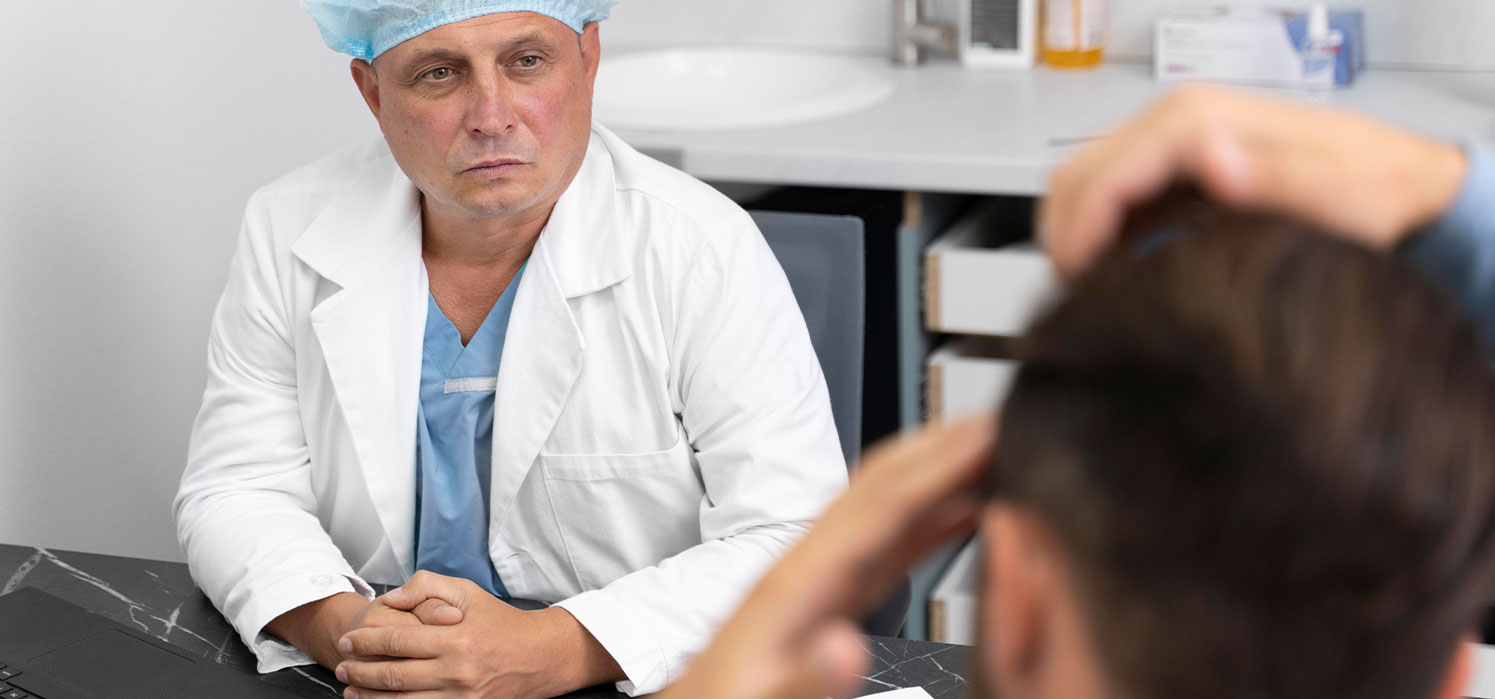
How Long Does Hair Transplant Operation Take?
How Long Does Hair Transplantation Take to Heal?
When the hair transplantation procedure is performed by a professional team, it can be performed between 6 and 8 hours in general, although the duration varies according to the number of roots. Therefore, we can answer the question of how long hair transplantation takes as 6 – 8 hours. Hair transplantation is a set of procedures that must be performed by professionals. Within the FUE method, which has been used for the last 20 years, DHI and Sapphire techniques are frequently used. DHI is not actually a method, but describes the action of root extraction and root transplantation with the same pen. Sapphire, on the other hand, is the canal opening process in the FUE method with the help of a sapphire-tipped apparatus. Therefore, we can say that each technique has its own benefits. By doing detailed research on the subject, you can make decisions accordingly and then proceed with the procedures. Your expert should be an experienced person in the field. At the same time, the team that will be with your expert should also be professional. Therefore, if each individual participating in the procedure works selflessly, the results are 97% successful. Thanks to such factors, you can achieve success in hair transplantation procedures.
Number of Hair Transplant Sessions
The number of sessions in hair transplantation is usually single. In other words, all procedures can be performed in a single session. However, in some cases, depending on the width of the area to be transplanted, services can be provided in two sessions. In response to the question of how long hair transplantation takes, we can answer in the range of 6 – 8 hours in total. The second session, which is performed one year after the first session, also lasts between 6-8 hours. Although you can benefit from natural methods, you should use the relevant herbs under the supervision of a doctor. Once the cause of your hair loss is solved, this hair loss can be stopped. In cases where genetic factors are effective, hair loss cannot be prevented but its speed can be reduced. In other words, it can be ensured that the baldness problem occurs at a later age. In order to benefit in this way, you should definitely go to a specialist doctor. If you provide these, you can have a successful procedure.
Benefits of Hair Transplant
- The first benefit of hair transplantation is psychological. Baldness is a factor that deeply affects people’s psychology. Therefore, since it is known that one of the most important factors that can affect your appearance is your hair, you can improve your psychology with hair transplantation and provide benefits in this direction.
- Another benefit of hair transplantation is that the transplantation process is performed at the same angle as your hair. In other words, you will have hair that looks natural in the same direction as the other hair on your head.
- Hair transplantation is permanent. In other words, hair loss will not occur in the transplanted hair afterwards. At this point, we can say that shock spillage will occur in the 2nd or 3rd month after the procedure. However, there is nothing to be afraid of in this case. Within 2 months after the loss, your hair will recover and start to grow. Afterwards, it will be in order.
Contact Us
For detailed information please contact us by filling out the form below.
- Published in General
What Should I Do After Hair Transplantation?
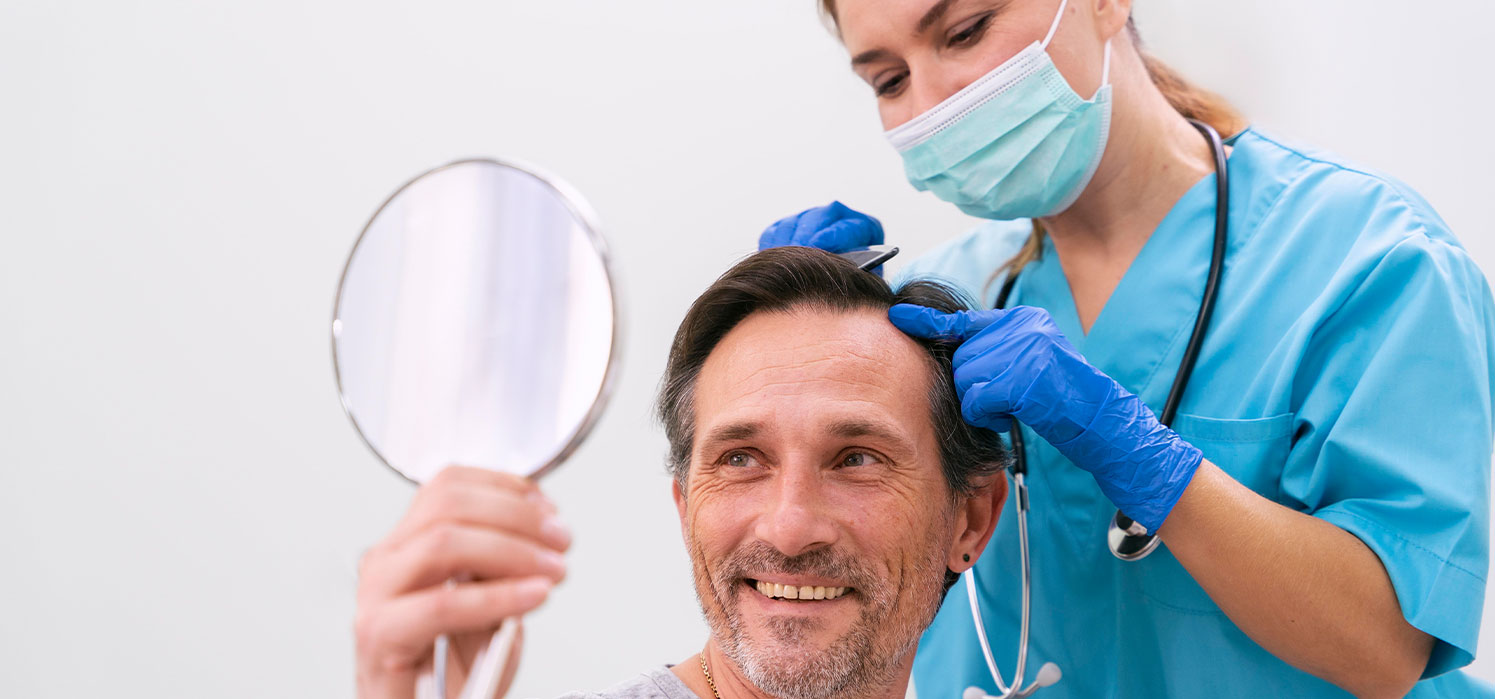
What Should I Do After Hair Transplantation?
The Process After Hair Transplantation
Before moving on to the process after the hair transplant procedure, we would like to emphasize once again the importance of finding the right specialist and performing the hair transplant procedure in a hospital environment. You can get more detailed information by contacting us.
When all procedures are completed and your hair transplant procedure is finished, the donor area will be bandaged and a bandage will be placed on your forehead and nape to prevent edema. As a precaution, your specialist will recommend you to use antibiotics and will give painkillers in case of pain. You should remember that the most important thing in this process is to follow your specialist’s instructions and recommendations. After the procedure, a period of patience and 10 days of care will begin for you.
After the procedure, it is natural to feel numbness for a while in the transplantation area, which is numb due to the effect of local anesthesia. Along with numbness, itching and small pimples may occur, especially during the healing process, this is related to the structure of your skin and is temporary.
On the day following the procedure, the bandage on the donor area is removed by your specialist, and on the second day of hair transplantation, your first hair washing procedure is performed gently by your specialist.
For 4 days following the hair transplant procedure, you should lie on your back and do not remove the bandage to prevent edema. If the edema spreads, you should know that this is also a normal situation and will disappear in 2-3 days. For 10 days, you should be cautious against any contact, impact or touch. At the end of 10 days, the crusts on your hair will fall off and you will have a short cut appearance.
For 5 days after hair transplantation, you should take a break from your sex life as the pressure will damage the transplanted hair follicles.
You should not smoke and consume alcohol within 10 days after the transplantation, blood circulation is very important for the health of your hair. If you are using, our recommendation would be to minimize it.
If the transplant was done in summer, you should not be exposed to intense sunlight for an average of three months, and if it is rainy, you should protect your hair from direct rain for two weeks. You should avoid heavy sports that will put pressure on your head for a month, and you should not shorten the transplanted area with a shaver for at least 6 months. If you want to shorten your hair, you should use scissors.
1-2 months after the procedure, shock spillage will occur, your hair will look as if it has never been treated, but you will overcome this period with patience as you have been informed by your specialist about the subject.
In an average of 5-6 months, you will start to get results. During this period, your hair may grow irregularly, one side may look sparser and one side may look more lush. This is a normal and temporary process. And at the end of one year, you will have full results.
We would like to state that, as First Class Esthetic, we will be available and with you at every stage of this process.
Contact Us
For detailed information please contact us by filling out the form below.
- Published in General
At What Age Does Hair Fall Out?

At What Age Does Hair Fall Out?
At What Age Does Hair Fall Out?
The answer to the question of how old hair falls out is of interest to people who have encountered hair loss or who think that it is genetically effective. While hair loss occurs at maximum speed between the ages of 25 and 35, it slows down in the 40s. However, hair loss starting in the 40s is also seen. Therefore, in this case, we can say that the age of hair loss varies depending on genetic factors. With hair loss, people experience baldness problem and baldness problem deeply affects people’s self-confidence. Therefore, the related problem should be treated with hair transplantation. This is the only way to replace the lost hair. However, this situation can be prevented in various ways at the beginning of the shedding situation. At this point, it is useful to know that hair loss caused by genetic factors cannot be prevented, but its speed can be slowed down. You should consult the nearest health institution and doctor to find out why your hair loss problem is caused. It can be said that there is a solution to the related problems. However, every delayed disease can cause some permanent damage. For this reason, you should get a doctor’s check-up without wasting time.
What are the Factors Affecting Hair Loss?
People who wonder the answer to the question of how old hair falls out also investigate the factors that are effective in hair loss. At this point, we can list the relevant factors as follows.
- The first factor we will count is genetic factors. The majority of hair loss is based on genetic factors. If this condition is present in your family and you are experiencing hair loss, you may be experiencing hair loss based on genetic factors. Nevertheless, you can get the most accurate result only with a doctor’s control.
- Frequent use of chemicals such as hairspray, gel, briyantin etc. can also cause hair loss. Therefore, it is useful to use these products without exaggerating. Especially if you have used them, the hair should be washed at the end of the same day. Be sure to pay attention to such factors.
- You may also experience hair loss due to hormonal imbalances. With hormone treatment, hair loss will also end.
- Some skin diseases can directly cause hair loss. In this case, you should go to the dermatologist and be under a doctor’s control as soon as possible.
- Finally, vitamin deficiencies are also known to cause hair loss.
- To learn about other factors, you should do plenty of research and consult your doctor.
Hair Loss Treatment
Although there are various treatment methods for hair loss, the most effective solution comes with hair transplantation. Hair transplantation is a permanent solution for baldness that occurs after the hair loss problem. For this reason, people may turn to hair transplantation. Although other treatment methods stop hair loss, you need to have a hair transplant to replace the lost hair with new hair. Hair transplantation has two different techniques, FUE and DHI. DHI is a non-technical method in which hair follicle extraction and transplantation are performed with the same pen. FUE is the name given to the technique that is applied in a very practical way and has been used for the last 20 years.
Contact Us
For detailed information please contact us by filling out the form below.
- Published in General
Why Does Baldness (Alopecia) Occur? Causes and Treatment
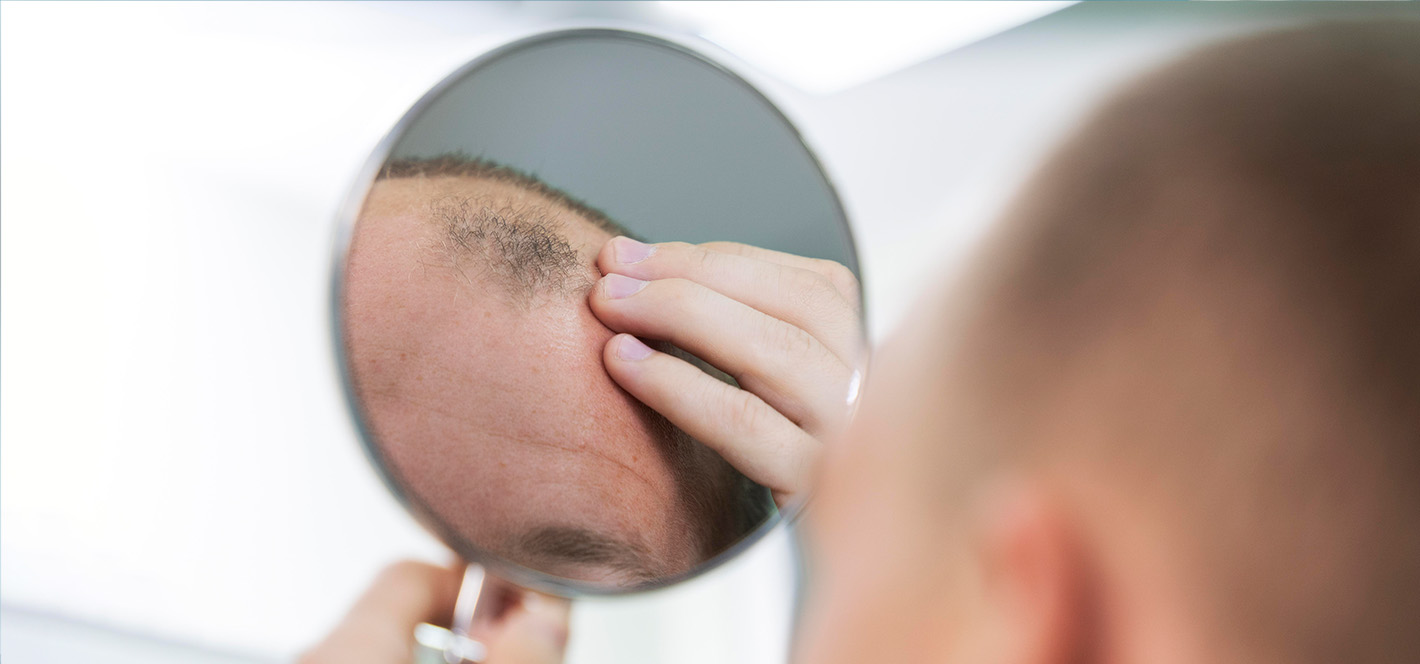
Causes and Treatments of Baldness (Alopecia)
Why Does Baldness Occur?
Baldness occurs if people cannot prevent it after being exposed to hair loss. So, why does baldness occur? According to the researches, the causes of baldness develop depending on genetic and non-genetic factors. Accordingly, many of the related conditions are of genetic origin. In other words, if your family members, especially your father has baldness or your mother has thinning hair, this condition in you is most likely genetic. However, the condition still needs to be diagnosed correctly by a doctor. Treatment methods will also vary depending on the cause of the disease or the related condition. After all, while hair loss within the normal hair loss limit is considered normal, if it exceeds this limit, a doctor’s control is essential. If you cannot understand this, you should still consult your doctor. Involving your doctor in the process will be the most effective thing you can do. For this, you can make an appointment with your physician at the nearest health institution.
Causes of Hair Loss
Since the main cause of baldness is hair loss, it is necessary to look at the causes of hair loss. For this, you can do detailed research or ask your doctor to diagnose your condition. The following items form the answer to the question of why baldness occurs.
- The problem of baldness can occur genetically or non-genetically. The vast majority of cases are caused by genetic hair loss. Although genetic hair loss cannot be stopped, the severity and speed of hair loss can be reduced by various methods. The definitive treatment method for genetic hair loss is hair transplantation.
- The first non-genetic factor is the presence of a skin condition. If there is a skin condition that causes hair loss, hair loss will stop with the elimination of this condition.
- Hormonal imbalances can cause hair loss. Therefore, with the treatment method that provides hormonal balance, hair loss will stop.
- Vitamin deficiencies such as B12, Vitamin D can also cause hair loss. As a result of the supplementation of the relevant vitamins, hair loss will be greatly reduced.
- Stress is the most common condition among non-genetic factors. Therefore, hair loss will end with treatment methods that will reduce stress.
- Intensive use of chemical products such as hair spray, gel, hair dye, etc. on the hair is also among the direct causes of hair loss. By stopping or reducing the use of these substances, hair loss will also end.
Hair Loss Treatment Methods
There are various treatment methods for hair loss. As explained above, when the cause of hair loss is understood and the treatment is carried out and successful results are obtained, hair loss stops. Therefore, if there is a great deal of hair loss in your hair, you should go to the doctor and decide whether the hair loss is genetic in the first place. If it is genetic, hair transplantation is recommended as a definitive solution; if it is not genetic, the treatment will be realized by eliminating the relevant factors and the hair loss will end.
Contact Us
For detailed information please contact us by filling out the form below.
- Published in General
What is the Best Method for Hair Transplantation?
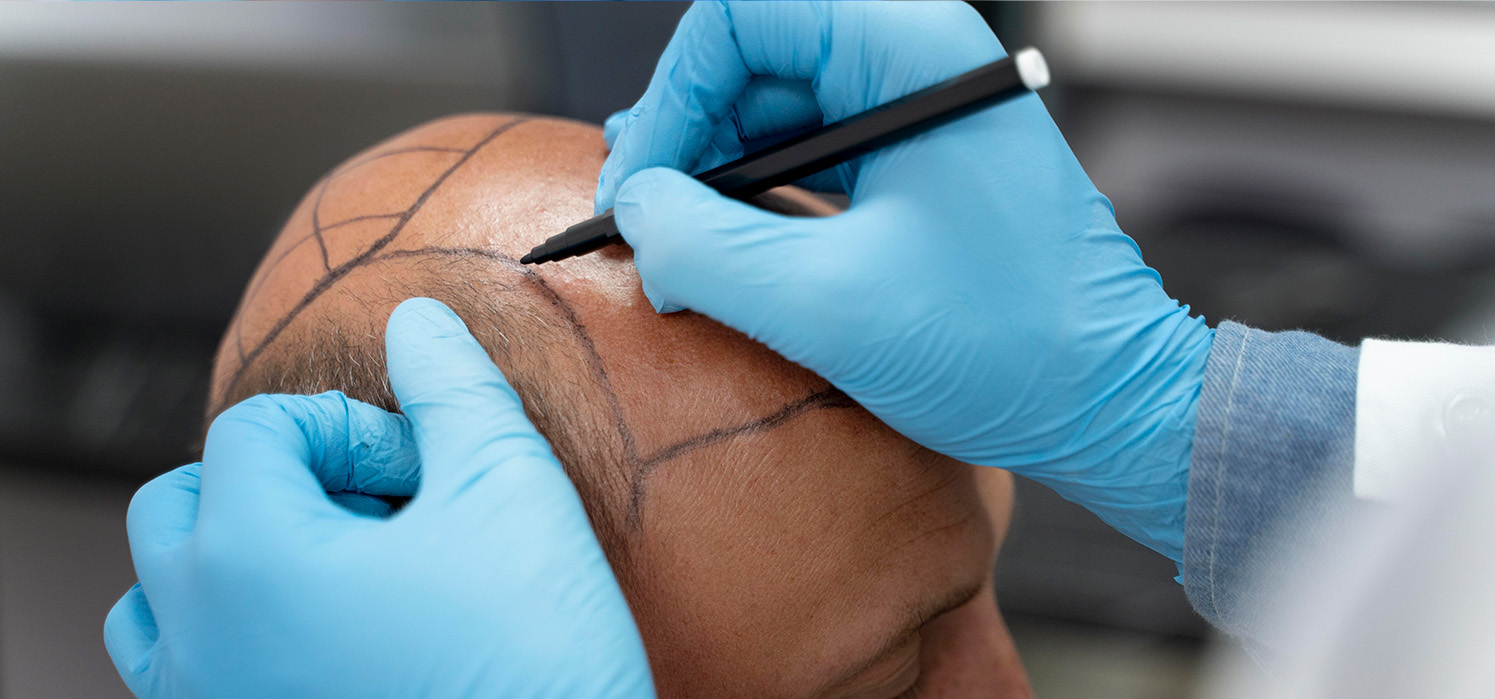
Which is the Best Method for Hair Transplantation?
There are only two methods of hair transplantation.
1- FUT Method
In this method, strips of hair are cut from the donor area coded not to fall out. Hair follicles are extracted from these scalps and transplanted one by one into the previously opened channels in the sparse or bald area. The procedure is finished by suturing the area.
2- FUE Method
In this method, hair follicles (grafts) are taken one by one from the donor area and these hair follicles are transplanted into the previously opened channels. Since the extraction is done one by one and there is no incision in the donor area, the operation ends after the transplantation. Today, the most efficient and successful method accepted all over the world is the FUE method. Contrary to what is said, DHI or SAPPHIRE are not hair transplantation methods, but channel opening techniques developed within the FUE method. In the light of this information, the method to be preferred is the FUE method, which is used and accepted in hair transplantation, and the technique to be used in channel opening is the one to be decided. When deciding between DHI and SAPPHIRE techniques, you should remember that the hair structure, skin hardness and the openness of the area to be transplanted will be decisive in these techniques, and that you can make the most accurate decision and the most appropriate technique with the recommendation of your specialist.
Contact Us
For detailed information please contact us by filling out the form below.
- Published in General
Sedated Hair Transplantation with Sedation (Narcosis)

Hair Transplant with Sedayson
What is Sedayson?
We can define sedation as the conscious state of anesthesia. While under anesthesia the individual is asleep, during sedation the individual is awake and does not feel pain or ache. In short, the individual is conscious and numb during the operation.
How is Sedation Applied?
The anesthesiologist administers controlled medication to the individual intravenously. Although the patient is conscious, the individual becomes ready for the operation when the area to be treated becomes numb.
Who is Sedation Applied to?
There is no obstacle to the use of sedation if preferred. It is a saving practice especially for individuals with needle phobia, fear and anxiety. There is no age limit or restriction for sedation.
Advantages of Sedation;
- No sensation of pain or soreness
- Prevents sudden movements arising from fear, anxiety or reflex
- Since consciousness is clear, it is possible to follow the process until the end of the procedure.
Contact Us
For detailed information please contact us by filling out the form below.
- Published in General











